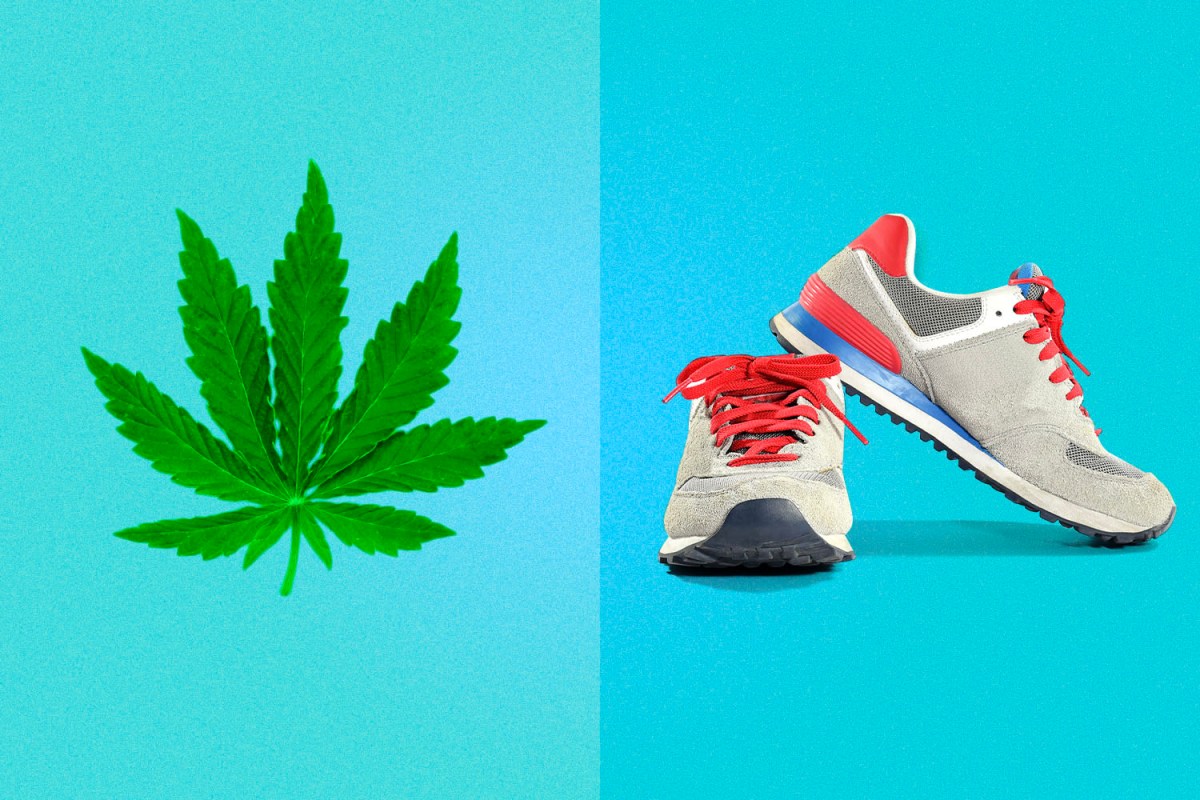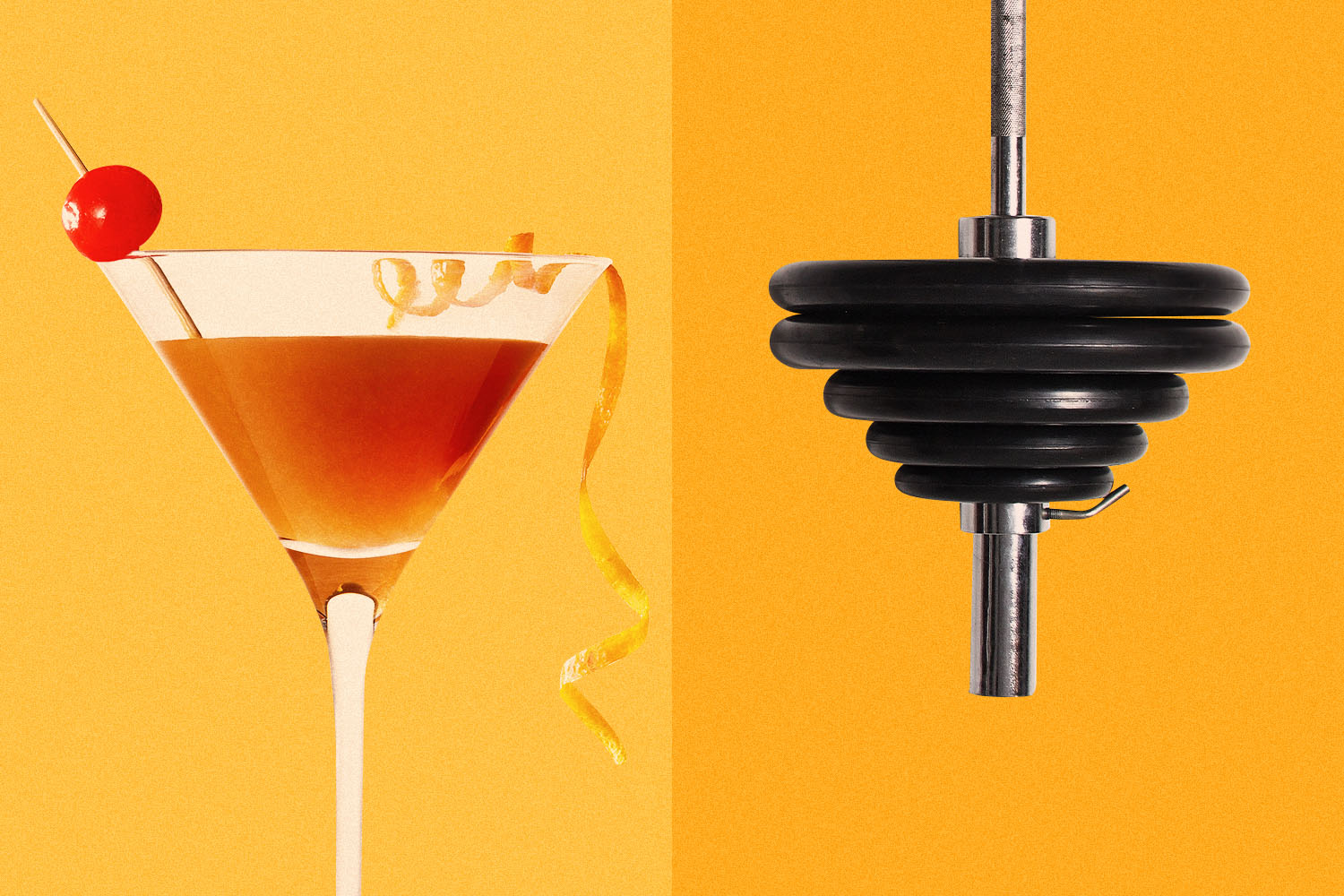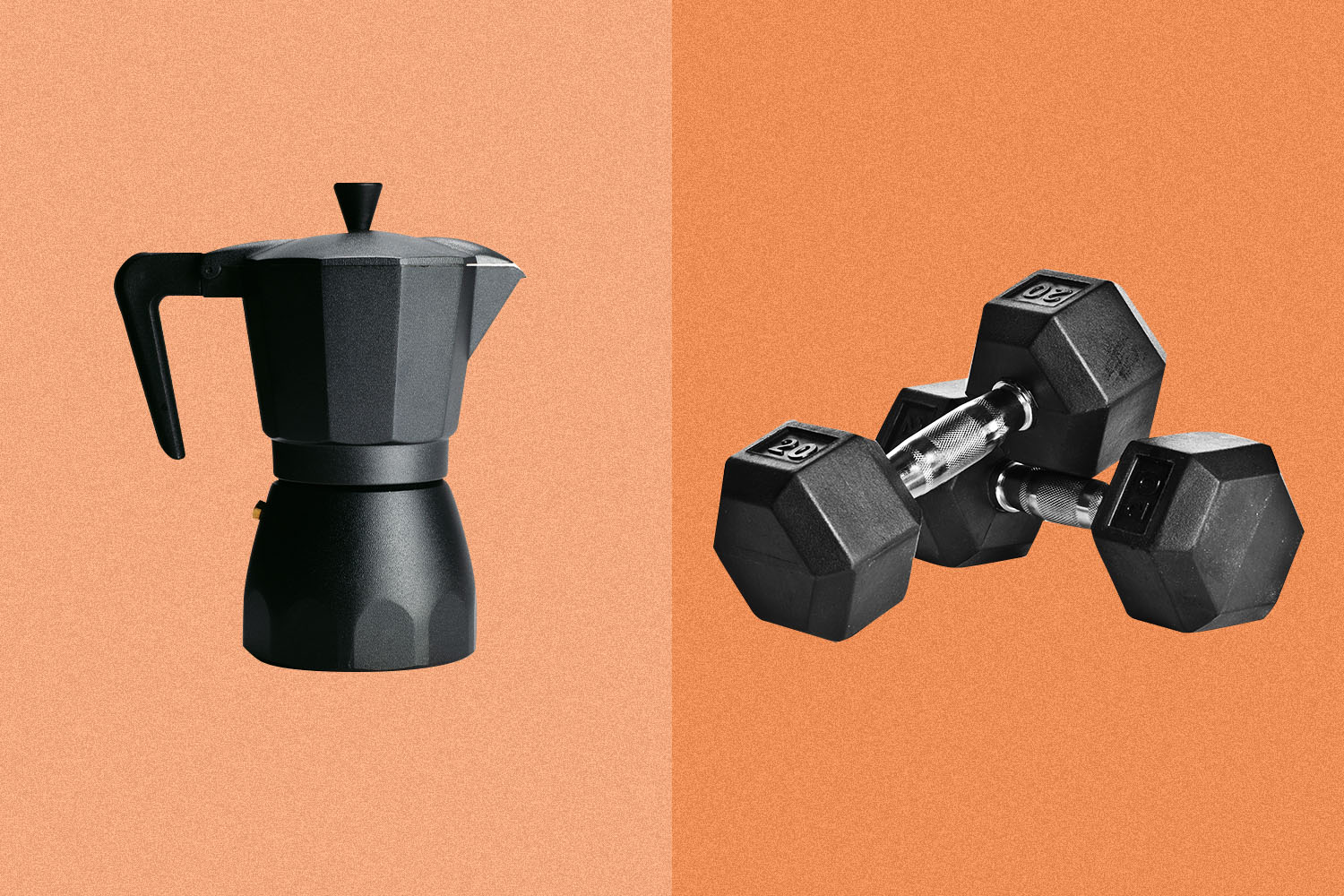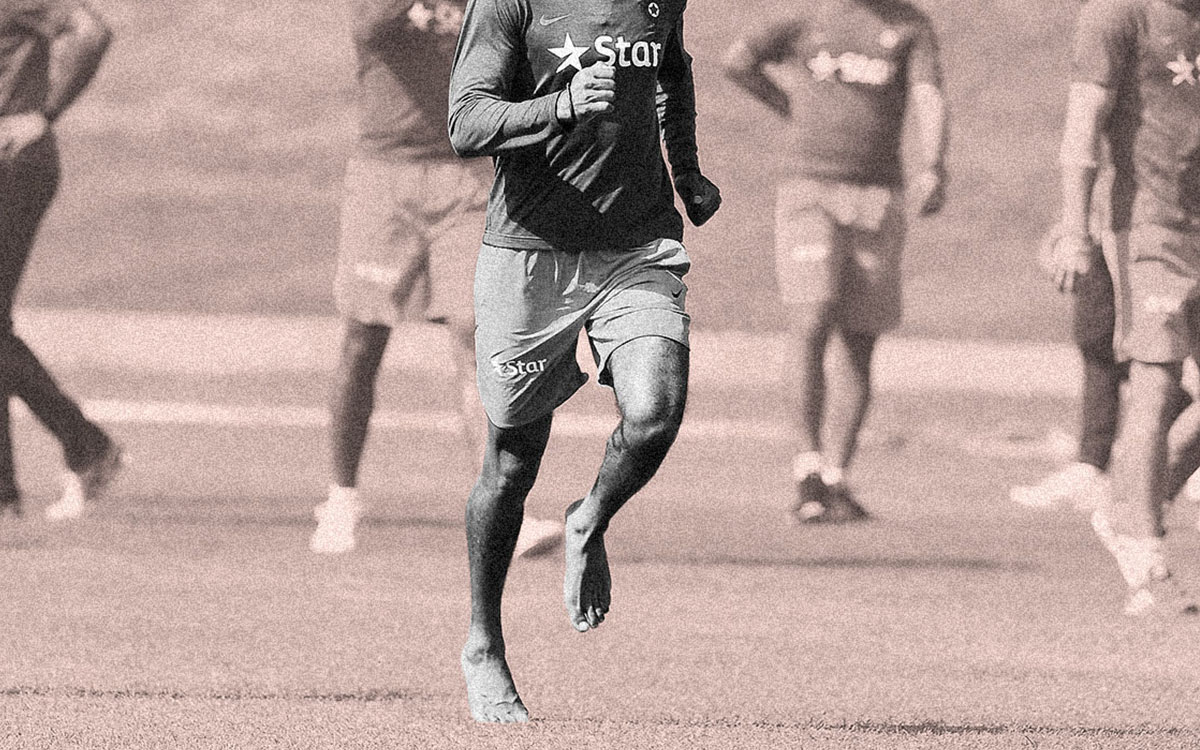According to a 2017 report, there are 47 million regular runners in America — defined as adults who lace up for at least one run a week. That number’s probably over 50 million by now, considering the pandemic-fueled running boom.
The activity’s been so ubiquitous since the exercise enlightenment of the 1970s that it’s difficult to pinpoint exactly what part of the country likes it the most. Is there a running mecca in the United States? Boston’s home to some of the sports most iconic brands, while hosting its most-revered marathon. North Carolina has prestigious running camps. Olympic-hopefuls spend the majority of their year in the deserts and mountains of northern Arizona. And Eugene, Oregon — the resting place of Steve Prefontaine, and the birthplace of Nike — literally goes by the moniker “TrackTown USA.”
But Colorado belongs in the conversation, too. Particularly Boulder. It’s a trail runner’s Eden, with endless paths, that well-publicized altitude advantage, and a ton of pretty peaks to gawk at as you chug through a tough eight-miler. When Swiss label On Running was looking for a place to train its athletes, it chose Boulder. Unsurprisingly, University of Colorado’s cross country team is routinely among the top five in the nation.
As it happens, Boulder’s also very good at something else: smoking weed. The Denver-Boulder metro area has one of the highest rates of pot consumption in the country, at 14.8%. Colorado’s cannabis culture goes without saying — there are over 500 dispensaries throughout the state, bookable cannabis “tours” (with names like Puff & Pottery), and high-tech hydroponic facilities, like Vera, looking to change the future of weed.
It’s a fascinating concept: a runner’s paradise right alongside a stoner’s paradise. And it actually isn’t all that unique. Some of the other running havens I mentioned, like Boston and Eugene, are also in states that have fully legalized recreational cannabis use over the last decade. The Cascades aren’t just home to Hayward Field; they’re home to 80 storefront dispensaries, including, as one cannabis tourism blog describes it, “small mom-and-pop dispensaries and fully integrated, craft cannabis companies supplying everything from seed to sale.” Burlington, Vermont is another example. And New York City, home to the world’s biggest marathon, is about to be the latest. The city legalized weed last month.
The cultural Venn diagram that’s sprung from these two communities working in close quarters is curious. A lot of runners, inevitably, now smoke grass. It doesn’t seem to square with either the “lazy stoner” or “puritan runner” stereotypes, and it raises some important questions: Can a running habit coexist with a weed habit? Should regular runners (especially those with event ambitions) feel safe to partake in all the cannabis product that’s now just down the road? Would doing so sabotage their training plan? Or on the flip side, are there possibly even some benefits to mixing joints with miles?
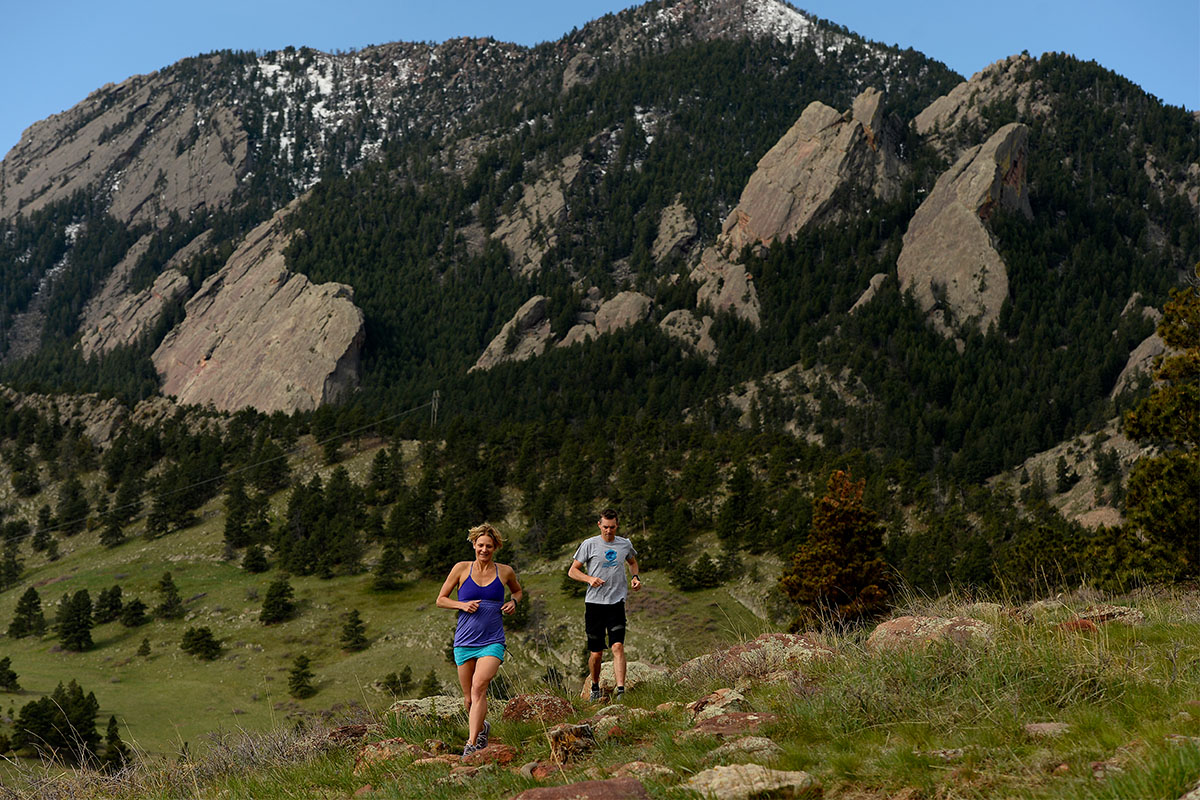
According to Dr. Benjamin Caplan, who is the Chief Medical Officer at the CED Clinic and was recently named one of the “top 100 most influential people in cannabis” by Cannabis Newsletter, there’s more symbiosis between running and cannabis than you’d initially think. Dr. Caplan tells InsideHook: “Cannabinoids have very strong anti-inflammatory properties. Some cannabinoids serve to facilitate muscle relaxation. In theory, this relaxation could impede optimal performance in exercise tasks, but this is purely theoretical. In fact, I have the great fortune of treating many athletes who feel that their cannabis consumption only amplifies their performance and allows them to push through self-imposed barriers.”
Muscle relaxation is critical for runners — that endgame is currently powering the surging recovery fitness movement, as runners invest in toys and tools that will help them ease sore quads and calves after a run. But it’s more than that; surprisingly, cannabis consumption can also increase lung capacity. Dr. Caplan explains, “Some terpenes have bronchodilator properties, and most cannabinoids function as strong anti-inflammatories that can open up airways. More air equals more energy.”
A positive outcome for the lungs here is extremely counterintuitive, but just because the biochemical properties of cannabis can open up airways, doesn’t mean that the method of ingestion — usually smoking — won’t simultaneously irritate those airways. While studies have indeed shown that tobacco is more damaging to the lungs than cannabis, the American Lung Association roundly refutes claims that weed can’t damage the lungs: “Smoking marijuana clearly damages the human lung. [It] injures the cell linings of the large airways … and leads to symptoms such as chronic cough, phlegm production, wheeze and acute bronchitis.”
Dr. Caplan agrees. “Basically, the problem is the excessive heat associated with the smoking itself. Smoking is irritating, and potentially dangerous in large amounts and/or high frequency. It can irritate the lung tissue itself, and also the bronchial tubes and connective tissues that connect into the lungs, which are lined with mucosal tissues and are very sensitive to external irritants.”
A runner doesn’t have to pass around a blunt, though. Vaporizers use less heat, which means fewer inhaled toxins, and then there are gummies, oils, balms and tinctures to choose from. As dispensaries have grown in size, so has the number of options would-be “smokers” have, and in the same way that it’s now possible to customize a cannabis order around the exact mood you’re searching for, you could aim to find a form of cannabis that pairs best with a run.
“As much as some cannabis formulations can help relaxation and reduce stress and anxiety, others can be exciting and increase motivation and focus,” Dr. Caplan says. “So depending on the formulation, an athlete really can tailor the effects of the cannabis to their individual needs with respect to exercise and performance requirements. This level of fine-tuning between product and athlete is a dynamic process and exquisitely complex.”
The key word there? Motivation. Popular media still associates weed with a night on the couch and food delivery, but cannabis consumption won’t necessarily undermine a runner’s eagerness to stick to a training schedule. In fact, some runners exclusively run while high. Minna Taylor, the CEO of a consulting company, says that she runs every single day, and “prefers” to run high. “With so much to keep track of, process and strategize, this routine helps me get air from the chaos and activate creativity where needed. I’m no longer high by the time I’ve completed a three to four mile run, but I’ve reclaimed tremendous clarity and summoned much-needed energy.”
Taylor is an amateur runner, but the method is backed by sponsored pros, too, and headlined by one of the best ultrarunners in the world: Avery Collins. Based out in Steamboat Springs, Colorado, the 28-year-old regularly places in the top 10 at the country’s most iconic ultras, like the Western States 100. He doesn’t consume cannabis on race day — that’s a violation of the World Anti-Doping Agency’s policies — but he does so before each run during his 150-mile weeks.
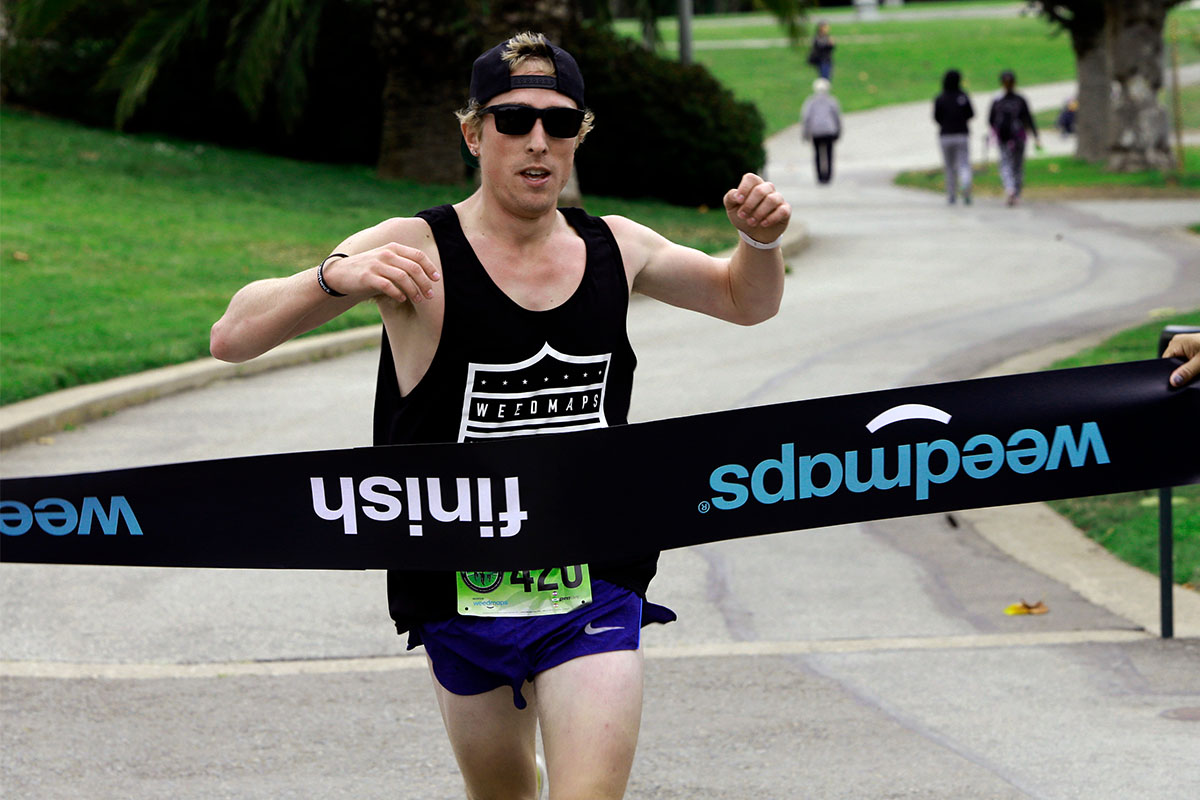
As a side habit, weed’s benefits for runners are largely biological. But for those who run high, the plant offers something more spiritual. Speaking to SBNation, Collins described the free sensation the routine gives him: “Nothing [goes on in my head]. That’s the best part. That’s the time in my life when I’m not thinking. I think at work. I think when I’m having a conversation. I don’t need to think when I’m running.” But that doesn’t mean he isn’t aware of his surroundings — when Collins runs high, he can feel everything. It’s almost strategic.
“One day you can go out and feel every single twinge, which may not be a bad thing,” Collins said. “I’ll take the downhills a little easier, try to switch my muscle groups on the uphill a little bit more. The benefit of being high is you’re more in tune with your body. It keeps you more alert and aware.”
At times, running can be a mind-numbingly monotonous activity. But “the psychological effects of cannabinoids can certainly help distract a bored runner,” Dr. Caplan says. “The stimulation of novel pathways of thought and new patterns of problem-solving that come with consumption of cannabis can be entertaining for a runner. It potentially adds an interesting level of perspective to the runner’s analysis of technique and execution of the exercise.”
Plus, running high is way more similar to the fabled runner’s high — that pesky, elusive bout of euphoria that only arrives on long, random runs — than people realize. A study published this year in Psychoneuroendocrinology confirmed what researchers have long suspected: endorphins aren’t behind the mysterious state, endocannabinoids are. They’re a biochemical compound similar to cannabis (which also make an appearance in the brain during orgasms), and, crucially, they’re able to make the leap from the bloodstream to the brain. Endorphins can not, which is why scientists started doubting their involvement with the runner’s high to begin with.
Why do our bodies release a weed-like compound on their own during long runs? It’s likely evolutionary. If you have to chase a gazelle across the savanna for an hour or more, it helps to be in good spirits. For those with preconceived notions about cannabis, this concept could be somewhat mollifying. Sensations of a high during a run are perfectly natural.
Of course, running high can be dangerous. It’s important to have your wits about you on a run, whether you’re darting through traffic or potentially encountering animals in the woods, and the simple fact is that cannabis will complicate these situations. Plus, positive experiences from those who have run high aren’t just anecdotal — they’re personal. It is absolutely possible that this sort of experiment disorganizes your thinking, filling you with anxiety or even paranoia. That’s not what you want for the precious hour of your day that you get to exercise.
Which is why it’s probably a good idea to not need a cannabinoid pre-workout every single time you set out for a run (seriously, one of the best parts of running is how turn-key the activity is — imagine having to roll a joint anytime you want to loop around the neighborhood?) and either confine cannabis to a recreational side hustle, or just not partake at all. If you’d rather not mess with THC, you can also nab at least the muscle relaxant properties of cannabis by turning to the exploding CBD industry, which seems to add a new topical to the industry every single week.
Ultimately, as America’s running havens and weed havens continue to go by the same names, just know that that marriage actually makes some sense. Plus, a bit of perspective for the “never ever” folks out there: there are so many other decisions you can make to interfere with your progress, like alcohol, red meat, or sugar. Weed isn’t a PED. It isn’t a miracle balm, either. But if taken thoughtfully, in a strain, dosage and method of ingestion that respects your training goals, it’s not only not going to hurt you — it can actually help you.
Whether you’re looking to get into shape, or just get out of a funk, The Charge has got you covered. Sign up for our new wellness newsletter today.
